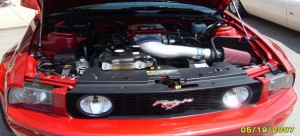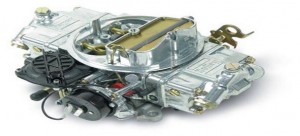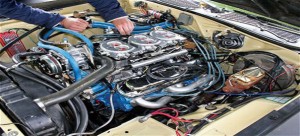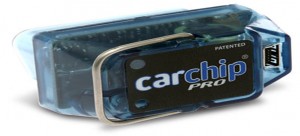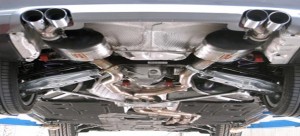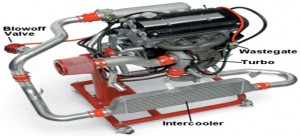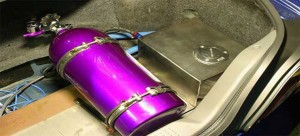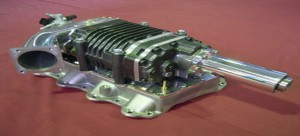Saturday, January 22, 2011
Turn Your Desktop Into a Real 3D Multi-Touch Desktop

The way a Windows desktop behaves, has not been changed since thirteen years. Its all the same, rough and rigid icons lying dumbly at the cold desktop. Now is the time you can give your desktop a little extra. Bring your desktop to real 3 Dimensional life like. Arrange icons in a pile or groups. It takes just a few clicks or your finger movements to do with all the data at your desktop to arrange it in the way you want it in a real 3D environment.
BumpTop is a fun, intuitive 3D desktop that keeps you organized and makes you more productive. Like a real desk, but better. Now with awesome mouse and multi-touch gestures, you will experience your desktop as never before. Your desktop doesn't have to be a boring graveyard for lost and forgotten files anymore! Transform it with BumpTop. Create the desktop that suits your needs and style. MAC and Linux versions are also available.
Multitouch features require Windows 7 touch hardware support.
Desktop 3D Enhancement
Multi-touch Screen 3D Desktop
Download BumpTop
Download BumpTop (Windows) (13.6 MB - Free Version)Read more: http://www.techmynd.com/turn-your-desktop-into-a-real-3d-multi-touch-desktop/#ixzz1Bn1muRYx
Top Ten Performance Car Upgrades
No matter how cheap or expensive our cars are, we treat them like our babies and make sure that they have all that they need. This is why you should upgrade them regularly!
Just like a computer, cars have fans that work over time to make sure that you car does not come to a screeching halt every time the engine heats up. Most cars come equipped with mechanical fans and while they get the job done, they also take a lot of out of the car.
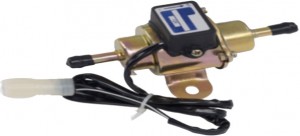 2. Electric Fuel Pump
2. Electric Fuel PumpSimilar to the mechanical fan, the regular pumps steal that power which should work towards moving the wheels faster. This is why you should go out and buy its electric counterpart and keep your car in sparkling condition till you decide to buy a new one!
We all know how horsepower is created- the air that is sucked in by the car’s engine travels till the fuel and creates the mixture. Naturally, if this amount can be enhanced, the horsepower will subsequently increase as well. Air Induction units do just that and the best part is that they tap into the fuel economy as well.
If the air induction unit des not appeal to you, you can always increase the capacity of your carburetor and add to the existing horsepower. This means that if you have a 4 barrel capacity, you should add to it and make it 6 barrel. Fortunately, many companies out there create state of the art carburetors because they understand that a small change could make all the difference.
Upgrading a carburetor will do the trick as well and this is possible if you transform it into a fuel injection. This performance car upgrade will increase the horsepower that your car runs on and keep the readings precise.
Performance chips are easy to install and their applications are flexible, as long as you buy the right one. That being said, these are available in two categories- while some are programmed, others come along with modifiers. The horsepower will increase, your car will run faster and have greater mileage.
We all know that every vehicle creates a lot of smoke and if that is not removed, it can enter the engine and meddle with its overall performance. Adding extra air to the engine is important but so is getting rid of it. However, every country has different laws as far as this performance upgrade is concerned so be very careful.
Turbochargers fit into gasoline engines and this is done mainly to increase the speed of the vehicle. The extra gas is tapped into and used to move the impellor and the result is that it transforms itself into fresh air. Even though this is slightly more expensive than the other upgrades, it is worth it.
The reason for inserting Nitrous Oxide into the engine is straightforward- it will attack the fuel, send it into a frenzy and therefore, enhance the horsepower. This upgrade is available for every model and every car in the market. The method that you want to use largely depends on you.
Superchargers are attached to the vehicle and serve as an air compressor for forced induction of an internal combustion engine. The greater mass flow-rate provides more oxygen to support combustion than would be available in a naturally-aspirated engine, which allows more fuel to be provided and more work to be done per cycle, increasing the power output of the engine.
Will the iPhone 5 Recognize Your Face?
By Bob Bhatnagar - Published September 29th 2010 - 20:47 in Apple • face recognition • iphone 5 • iphone hardware • iPhone Software • News • next generation • Polar Rose



With full face detection and tracking of faces in video, the solutions Polar Rose delivers could change how you interact with your iPhone. Now that the iPhone 4 has a front-facing camera, passcode lock could end up going the way of the dinosaurs.
Imagine holding your iPhone up and the device automatically unlocking to reveal your home screen. The neat trick is that your iPhone won't do this for anyone else. If the software on the iPhone recognizes your face, this replaces your passcode. Some Apple patents have recently been revealed that could lead to iPhones recognizing the shape of your hand, which could also replace the four-digit passcode.
Other interesting uses for the technology include automatically tagging people in photos and recognizing FaceTime callers from contact information. As the photographs taken on the iPhone improve, various image analysis algorithms could also be used to automatically classify and organize photos by type or subject.
Apple's iPhoto currently recognizes faces in pictures for tagging purposes. It's possible Apple is looking to improve and expand this functionality. Polar Rose removed its free tagging services for Facebook and Flickr earlier this month, citing interest from larger companies in licensing their technology. Staying true to form, Apple has not confirmed the acquisition of Polar Rose.
Thursday, January 20, 2011
Less Than 0.4% of Android Users Running Current OS
 More than 90% of iPhone users are running the most current OS, but a mere 0.4% are running the latest version of Android. The disparity highlights the poor practices of OEMs and phone carriers.
More than 90% of iPhone users are running the most current OS, but a mere 0.4% are running the latest version of Android. The disparity highlights the poor practices of OEMs and phone carriers.At TechCrunch they’ve complied some stats from around the web demonstrating the radical disparity between the currentness of Android and iPhone users operating systems. 90% of iPhone users have the current version of iOS (and a significant number of the remaining 10% likely have jailbroken phones and are waiting for a stable iOS 4 jailbreak). Conversely only 0.4% of Android users are on Android 2.3; even when generously adjusted to include the prior revision (2.2) the number only climbs to a paltry 51.8%. Why is this?
Obviously, this isn’t the Android users’ faults. The problem is that the OEMs and carriers are holding these updates up for a wide variety of reasons, 99 percent of which are undoubtedly bullshit. Here’s a perfect example. Supposedly, the Android 2.2 update is all ready to go for Samsung Android phones on T-Mobile, but Samsung doesn’t want to push it out so that they can entice people to buy the newly announced Vibrant 4G+ instead.
Sounds about right to me. I have a perfectly functional HTC Hero from Sprint and it took them nearly a year to release an upgrade from Android 1.5 to 2.1. Sprint has halted the upgrade path for the phone so it will not be officially receiving any upgrades to Android 2.2 or 2.3. I liberated my phone with a custom ROM but I’m in the extreme minority when it comes to phone purchasers. Those of us slinging around custom ROMs and jailbreaks are not your average cellphone owner.
Check out the full article at the link below for more information and additional breakdowns of cellphone OS via phone and carrier.
Sunday, January 16, 2011
Mobile Show down for 2011
It’s January again, and that means the annual International Consumer Electronics Show (CES) kicked off last weekend in Las Vegas. The show is the tech industry’s first chance of the new year to show off and announce new products and technologies. This year’s show featured everything from automotive technology to set-top boxes and 3DTVs, however mobile devices stole the show. The hottest buzzword this year was probably “Honeycomb tablet,” referring toGoogle’s next Android OS, version 3.0, that is optimized for tablets. If it wasn’t that, it was definitely swirling rumors of Verizon’s iPhone 4.
To give you a quick rundown of the best of the show, here are my top 5 things from CES 2011.
Motorola Xoom
 Arguably the best of theHoneycomb tablets was theMotorola Xoom; a 10.1-inch Android 3.0 tablet that’s loaded with features aimed at premium web, gaming, and media experiences. The screen uses a capacitive touch interface and displays with a resolution of 1280 x 800, comparable to small HDTVs. It also includes built-in WiFi 802.11n, Bluetooth v2.1, USB 2.0 support, and HDMI output along with Adobe Flash support. If you’re looking for something to call an “iPad Killer,” this is it. A WiFi-only version is expected to be out in April of this year with a Verizon 4G version in May. Powering this feature-packed tablet is my next pick, the NVIDIA Tegra 2.
Arguably the best of theHoneycomb tablets was theMotorola Xoom; a 10.1-inch Android 3.0 tablet that’s loaded with features aimed at premium web, gaming, and media experiences. The screen uses a capacitive touch interface and displays with a resolution of 1280 x 800, comparable to small HDTVs. It also includes built-in WiFi 802.11n, Bluetooth v2.1, USB 2.0 support, and HDMI output along with Adobe Flash support. If you’re looking for something to call an “iPad Killer,” this is it. A WiFi-only version is expected to be out in April of this year with a Verizon 4G version in May. Powering this feature-packed tablet is my next pick, the NVIDIA Tegra 2.
NVIDIA Tegra 2
 NVIDIA showed off its next generation “system on a chip,” the Tegra 2. This little powerhouse is going to be at the heart of many of the next mobile devices you’re going to see for at least the next year.It’s a dual core ARM CPU clocked at 1 GHz with Ultra Low Power GeForce graphics that provide 1080p video playback & recording as well as HDMI output. Naturally, it also handles audio and image processing, too. All of these capabilities combined are capable of delivering impressive performance never before seen in mobile devices, in everything from general use multitasking to taxing 3D gaming.
NVIDIA showed off its next generation “system on a chip,” the Tegra 2. This little powerhouse is going to be at the heart of many of the next mobile devices you’re going to see for at least the next year.It’s a dual core ARM CPU clocked at 1 GHz with Ultra Low Power GeForce graphics that provide 1080p video playback & recording as well as HDMI output. Naturally, it also handles audio and image processing, too. All of these capabilities combined are capable of delivering impressive performance never before seen in mobile devices, in everything from general use multitasking to taxing 3D gaming.
Motorola Atrix
 Also powered by the NVIDIA Tegra 2 is the Motorola Atrix, a fascinating new smartphone that can dock with a computer laptop shell or a TV. The Atrix runs on Android OS 2.2, features a 4-inch touchscreen, and will have front and rear-facing 5MP cameras. As for storage capability, it will have 16 GB built-in with support for microSDHC cards up to 32 GB. With those features and its Tegra 2 processor that would be impressive enough. But wait, there is more! As previously mentioned, this smartphone can dock with a notebook shell accessory that will immediately give you all the convenience a notebook offers; a larger screen, a full size keyboard, and USB ports. It will also connect to your HDTV via HDMI or through an HD dock that will turn the TV into a full size display and use the phone itself as a mouse. The Motorola Atrix was announced to launch in Q1 of 2011.
Also powered by the NVIDIA Tegra 2 is the Motorola Atrix, a fascinating new smartphone that can dock with a computer laptop shell or a TV. The Atrix runs on Android OS 2.2, features a 4-inch touchscreen, and will have front and rear-facing 5MP cameras. As for storage capability, it will have 16 GB built-in with support for microSDHC cards up to 32 GB. With those features and its Tegra 2 processor that would be impressive enough. But wait, there is more! As previously mentioned, this smartphone can dock with a notebook shell accessory that will immediately give you all the convenience a notebook offers; a larger screen, a full size keyboard, and USB ports. It will also connect to your HDTV via HDMI or through an HD dock that will turn the TV into a full size display and use the phone itself as a mouse. The Motorola Atrix was announced to launch in Q1 of 2011.
Casio Tryx
 The Casio Tryx is a 12 MP digital camera that with a 3-inch touchscreen that is built with swivel and pivot functions that give you all sorts of unique shooting options. The outer frame swivels and pivots around the lens & screen section so you can pose it at almost any angle or hang it from a suitable surface to add interesting angles to your shots. It shoots stills at up to 12 MP of course, but it also can record full HD video at 30 frames per second. The Casio Tryx is due to go on sale in April 2011 at or around $250.
The Casio Tryx is a 12 MP digital camera that with a 3-inch touchscreen that is built with swivel and pivot functions that give you all sorts of unique shooting options. The outer frame swivels and pivots around the lens & screen section so you can pose it at almost any angle or hang it from a suitable surface to add interesting angles to your shots. It shoots stills at up to 12 MP of course, but it also can record full HD video at 30 frames per second. The Casio Tryx is due to go on sale in April 2011 at or around $250.
Polaroid GL20 Camera Glasses
Lady Gaga and Polaroid team up to make sunglasses with a 5 megapixel digital camera and  two 1.5-inch OLED screens behind the lens that display the images. Don’t I have to mention Lady Gaga? I’m not sure what the practical application for these is going to be, or if they’ll even go on sale, but if you wear them, you’ll definitely get some attention. There is no official release date yet for these.
two 1.5-inch OLED screens behind the lens that display the images. Don’t I have to mention Lady Gaga? I’m not sure what the practical application for these is going to be, or if they’ll even go on sale, but if you wear them, you’ll definitely get some attention. There is no official release date yet for these.
 two 1.5-inch OLED screens behind the lens that display the images. Don’t I have to mention Lady Gaga? I’m not sure what the practical application for these is going to be, or if they’ll even go on sale, but if you wear them, you’ll definitely get some attention. There is no official release date yet for these.
two 1.5-inch OLED screens behind the lens that display the images. Don’t I have to mention Lady Gaga? I’m not sure what the practical application for these is going to be, or if they’ll even go on sale, but if you wear them, you’ll definitely get some attention. There is no official release date yet for these.It’s always exciting to kick the year off hearing about the toys we’re in store for. What were some of your favorites?
Tuesday, January 11, 2011
De-Crapify Your Windows Printer or Scanner Setup
 Your printer's manufacturer doesn't want you to use your printer to just print and scan. They want to install bloated apps, eat memory, and to constantly nag you for more ink. Trim your printer setup to the minimum with this five-step guide.
Your printer's manufacturer doesn't want you to use your printer to just print and scan. They want to install bloated apps, eat memory, and to constantly nag you for more ink. Trim your printer setup to the minimum with this five-step guide.Image via Kevin Cortopassi.
Mac owners and brave Linux adherents don't really need this guide. Oversized, heavily branded printer software does exist for Mac platforms, but you can use most any printer by simply plugging it in and hitting Command-P in an app. Linux, for the most part, works the same way, with the essential driver bits baked into the core of the system.
That leaves Windows. A hardware driver is supposed to be a simple, mostly hidden interface, but the majority of printer installation packages—whether installed off the CD in the box or from the printer maker's web site—want to do far more than just explain a printer's inner workings to your system.
When you're cleaning up a slow-going system, look in the system tray, or hit Ctrl+Shift+Esc. You'll likely find one or more apps running that do nothing more than wait for a printer or scanner to be connected, then somehow pop up and do, well, something. Some printer makers step a bit further, installing toolbars in your browser for supposed "smart printing," and installing a whole mess of software for image editing, photo retouching, project printing, and scanning that's far less useful than a lot of free software.
If you're the victim of a printer maker's overly ambitious plans, here's a sequential guide to getting rid of the bloat and reclaiming working memory, hard drive space, and some semblance of sanity in your printer setup.
Step One: Uninstall What You've Got

If it's a printer you're using at home, go ahead and wipe out whatever software you've got on your system associated with it. You don't want remnants of other drivers and software hanging around when you start over—trust me on that. Hit your Start menu, select the Control Panel, then click "Uninstall a program." Search for your printer maker in the upper-right corner ("HP," "Canon," "Lexmark," etc.). You might be surprised at all the stuff that's there.
Click each item, starting with the most primary-sounding item, and hit "Uninstall/Change." If you're lucky, you'll get a prompt from that main item to uninstall everything; otherwise you might have to doggedly detach each piece individually. You may also have to restart your system once or twice, too, and maybe immediately. When I was cleaning up my system's printer setup, HP's software didn't really give me a choice.
Note: If you're using Windows XP or a similarly older version, I recommend using Revo Uninstaller, especially its portable (a.k.a. no installation needed) version to do your wiping. It's not quite as necessary with Windows Vista/7, but it's still a pretty good app, despite how buried the free version is on Revo's web site these days.
Step Two: Try Windows Update First
 Power up your printer and plug its USB cord into your computer while Windows is running. Microsoft has a pretty extensive library of printer drivers, especially for popular printers that aren't brand-new, and if your system is connected to the web, Windows might be able to automatically download and install a driver—possibly a smaller driver package than the manufacturer offers, too. It could just be the same kind of plus-sized installation, too, but installing through Windows gives you access to regular, automatic updates. If you luck out with Windows' automatic installation, skip ahead to the Cleaning Out Auto-Starters section.
Power up your printer and plug its USB cord into your computer while Windows is running. Microsoft has a pretty extensive library of printer drivers, especially for popular printers that aren't brand-new, and if your system is connected to the web, Windows might be able to automatically download and install a driver—possibly a smaller driver package than the manufacturer offers, too. It could just be the same kind of plus-sized installation, too, but installing through Windows gives you access to regular, automatic updates. If you luck out with Windows' automatic installation, skip ahead to the Cleaning Out Auto-Starters section.Step Three: Grab the Latest from the Web
 If Windows can't fix up your printer automatically, head to your manufacturer's web page, then look at the top of the page for the "Support," "Support & Drivers," or "Support & Downloads" section. You'll be asked to enter in your model number, then likely pick which version of Windows you're running (Unsure? Click the second question here).
If Windows can't fix up your printer automatically, head to your manufacturer's web page, then look at the top of the page for the "Support," "Support & Drivers," or "Support & Downloads" section. You'll be asked to enter in your model number, then likely pick which version of Windows you're running (Unsure? Click the second question here).More than anything, be on the lookout for a more stripped-down version of your printer driver—one without all the extra software and "utilities." You'll know this by the smaller download size, which is usually listed. You may be out of luck, like me, and be stuck with a 200 MB download. Hold your nose, click to save it, and grab yourself a coffee while it downloads.
Step Four: Cut Down the Cruft

That coffee wasn't a cheap transition—well, that's not all it was. You'll want to be paying attention when you install your software. I've installed my own HP printer drivers at least a dozen times, and I just noticed for the first time that I could limit the software it installs. It's a blue link that looks like part of a license agreement (see in the image above). Those "Click here to customize" links are often pretty subtle and tucked away—printer makers want everything to be easy, and they also like the profits from "Buy supplies" links. Look for them and use them if you can, keeping only the most basic software. Hopefully they're labeled as such—driver software, printing functionality, and so on.
Check that your printer actually works: print a test page, if offered, or simply print out a simple document or web page. Now that we know it's installed and operational, let's scale things back.
 Head first to your Startup folder in your Start menu (Programs/All Programs->Startup), which is the nicest way software can suggest you run something on your computer automatically. In my case, my printer isn't always connected to my main laptop, and even if it was, I'm only scanning things occasionally. So I don't need a "Digital Imaging Monitor" running on my system at all times. Right-click on the entry in the Startup folder and hit Delete. You didn't delete the program, just the shortcut, so you can always add it back if it's useful.
Head first to your Startup folder in your Start menu (Programs/All Programs->Startup), which is the nicest way software can suggest you run something on your computer automatically. In my case, my printer isn't always connected to my main laptop, and even if it was, I'm only scanning things occasionally. So I don't need a "Digital Imaging Monitor" running on my system at all times. Right-click on the entry in the Startup folder and hit Delete. You didn't delete the program, just the shortcut, so you can always add it back if it's useful.Now we're going to check out what other goodies our printer people asked our system to automatically start each time. Open your Start menu and enter
msconfig and press Enter (on Windows XP, enter msconfig into the "Run" item on the Start menu. Click on over to the Startup tab.
Look through this list for your printer's manufacturer. It's never good to make bold pronouncements about computer issues, but I can say that I've never encountered a situation where a computer needed some kind of auto-starting, printer-related app to print. When it's time to print, your app contacts the driver, which feeds the printer, and your paper comes off the roller. When you're done, hit "Apply." If one of your apps really was needed, you can always head back into
msconfig and re-check the app, so experiment with a clear conscience.Unsure of which apps you actually need? Note the name of the application, usually ending with ".exe," and enter it into the search box at Sysinfo.org's Startup List. You'll likely find it there, along with a letter-coded recommendation on whether you need to keep it running or not: N, U, and X are safe to un-check in your
msconfig window.Step Five: Install Great, Lightweight Alternatives for Scanning and Photo Editing
If you've installed the basic printer and scanner driver for your system, that's all you really need to actually print and scan. Printer makers offer you scanning apps, maybe the kind that auto-load when you lift your scanner cover, and image/photo editing tools, but you've probably never heard any tech blog rave about such an app's greatness.
Scanning (and Faxing)
I asked on Twitter for recommendations on alternative apps for scanning, and got quite a few responses. I'm also a little embarassed to admit that I didn't realize that Windows Fax and Scan was available in all versions of Windows 7, and the Business, Enterprise, and Ultimate editions of Windows Vista. It's a pretty straightforward tool for simply grabbing a document from your scanner, saving it to your hard drive, and getting on with your life. It can also handle faxes, if your system is set up with a phone connection.
Twitter user hqraja suggested FreeKapture, as well. But the majority of respondents noted that their favorite image editing apps—Paint.net, Picasa, and more—offer their own scanner functionality, usually tucked into an "Import" function in the File menu.
Scan-to-Text OCR:

Need to convert text on paper to text on your screen? We like FreeOCR for its serious simplicity (Direct download link here). Readers also responded with suggestions forSimpleOCR.

Need to convert text on paper to text on your screen? We like FreeOCR for its serious simplicity (Direct download link here). Readers also responded with suggestions forSimpleOCR.
Simple Image Editing Software

You can read up on our readers' general favorite picks for image editing, but they tend to be a bit more in-depth than the average user needs for simple touch-ups, light fixes, and cropping/resizing—except Picasa. Picasa is a great tool for editing, red-eye-reducing, cropping, and emailing or backing up photos, as we suggested in a feature on setting up your folks. If you wanted a more straight-ahead editing tool, Paint.net is the next level up.
With just your drivers installed, your auto-starting items reduced, and better scan and edit software installed, your system, and hopefully your workflow, is a bit cleaner and more agile. If you've done your own printer purge and have further tips, we'll gladly hear them in the comments.
Send an email to Kevin Purdy, the author of this post, at kevin@lifehacker.com.
Subscribe to:
Comments
(Atom)


